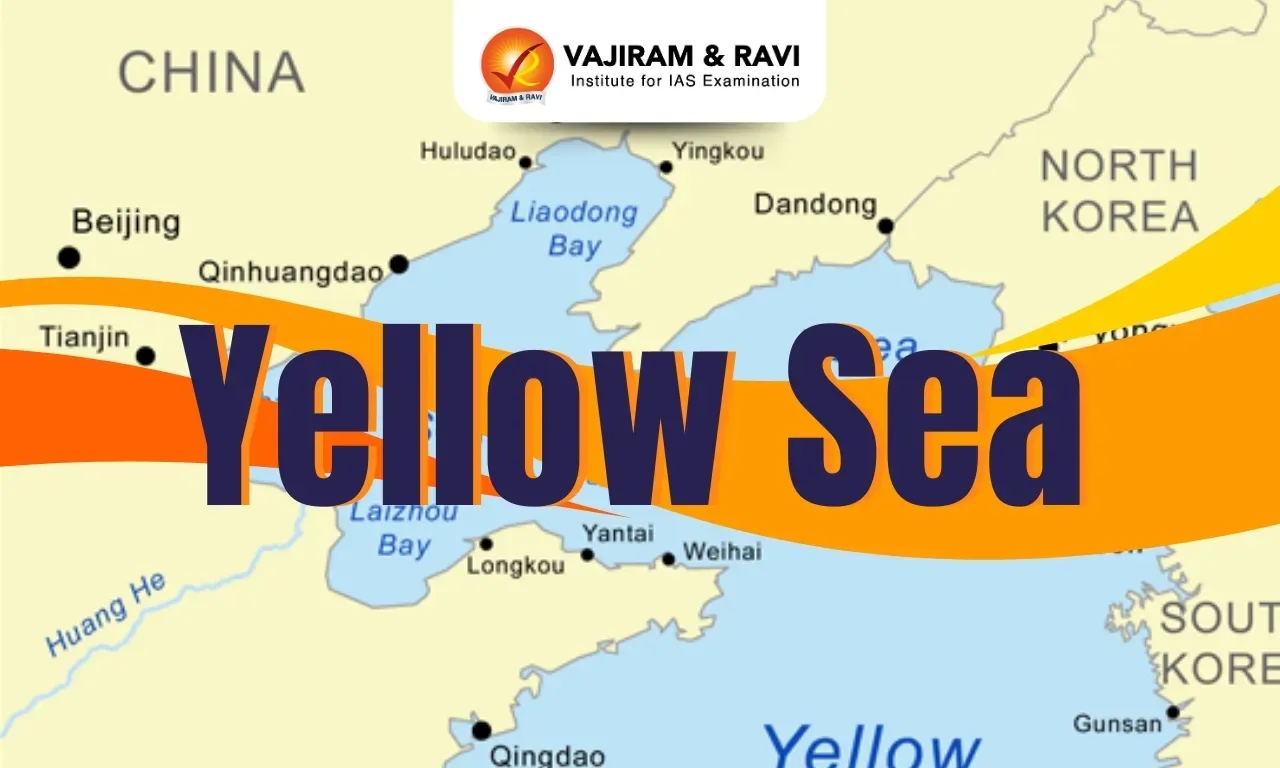Yellow Sea Latest News
After aggressive posturing in the South China Sea, China is upping the ante in the Yellow Sea, following the building of a gigantic steel rig.
About Yellow Sea
- Also referred to in China as Huang Hai and in North and South Korea as the West Sea, Yellow Sea is a marginal sea of the Western Pacific Ocean.
- It is positioned to the north of the East China Sea.
- It is bordered by mainland China in the north and west and by North Korea and South Korea in the east.
- The sea was named for the yellowish sand particles originating from the Gobi Desert that descend on the surface of the sea, thereby giving it a golden yellow color.
- It covers an area of approximately 400,000 sq.km.
- It measures about 960 km from north to south and some 700 km from its east to west.
- It is relatively shallow with an average depth of 180 to 394 feet (55 to 120 meters).
- The sea is one of the world’s largest portions of continental shelf submerged in water.
- Climate: It is characterized by very cold, dry winters and wet, warm summers.
- Major rivers discharging directly into the Yellow Sea include the Han, Yangtze, Datung, Yalu, Guang, and Sheyang.
- Islands: The Yellow Sea is dotted with numerous islands, the largest of which include Jeju Island (South Korea), Shandong Peninsula islands (China), and Ganghwa Island (South Korea).
- Leading port cities include Qingdao and Dalian in China, Inch’ŏn in South Korea, and Namp’o in North Korea.
Source: ET
Last updated on June, 2025
→ UPSC Notification 2025 was released on 22nd January 2025.
→ UPSC Prelims Result 2025 is out now for the CSE held on 25 May 2025.
→ UPSC Prelims Question Paper 2025 and Unofficial Prelims Answer Key 2025 are available now.
→ UPSC Calendar 2026 is released on 15th May, 2025.
→ The UPSC Vacancy 2025 were released 1129, out of which 979 were for UPSC CSE and remaining 150 are for UPSC IFoS.
→ UPSC Mains 2025 will be conducted on 22nd August 2025.
→ UPSC Prelims 2026 will be conducted on 24th May, 2026 & UPSC Mains 2026 will be conducted on 21st August 2026.
→ The UPSC Selection Process is of 3 stages-Prelims, Mains and Interview.
→ UPSC Result 2024 is released with latest UPSC Marksheet 2024. Check Now!
→ UPSC Toppers List 2024 is released now. Shakti Dubey is UPSC AIR 1 2024 Topper.
→ Also check Best IAS Coaching in Delhi
Yellow Sea FAQs
Q1. What countries border the Yellow Sea?+
Q2. Which South Korean island is located in the Yellow Sea?+
Q3. Why is the Yellow Sea called so?+
Tags: Prelims Pointers upsc prelims current affairs yellow sea
























